Potting Soil vs Garden Soil: What’s the Difference?
-
Pete Ortiz
- Last updated:

Whether you are a professional or a newbie in the world of gardening, you must know the importance of soil when it comes to the proper growth and development of plants. While potting and garden soil are the two most used growing mediums, spotting the difference between the two can be challenging.
Potting soil also referred to as a potting mix, is often sterile and more lightweight, thus giving plants more wiggle room in the container pots. Garden soil, on the other hand, has more generic features and organic components. It also has a heavier texture, allowing plants to grow without additional support.
Besides the differences in uses and composition, there are other differences that you need to be aware of before choosing one as a growing medium. In this article, we will give you an overview of both potting and garden soil as well as discuss the differences between the two. Read on to learn more.
Overview of Potting Soil
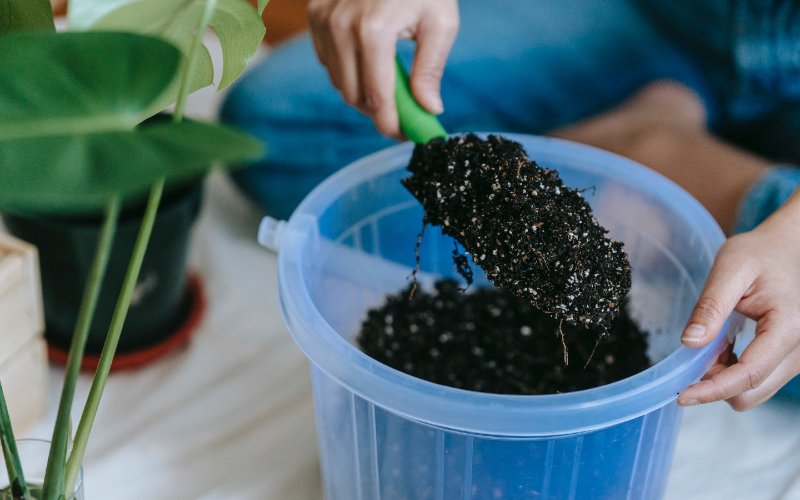
What Is Potting Soil?
Also known as potting mix, this is a growing medium made up of materials such as perlite, bark, vermiculite, sphagnum moss, compost, or coir. This potting mix is designed with a lot of nutrients to encourage the growth of plants specifically in containers.
Despite what the name suggests, this medium doesn’t contain actual soil. Actual soil can carry a host of plant pathogens and fungi that can infect your plants. Furthermore, potting soil is sterilized to kill disease-causing organisms in the blend. This also means that the potting soil takes longer before going bad.
Organic material in potting soil provides plant nutrients, while the perlite or vermiculite used in the blend ensures it remains loose and well-draining. Therefore, potting soil is lightweight, and this prevents the soil mix from compacting around plant roots or retaining too much water, which can be detrimental to the plant’s development.
Some potting soils even contain water-retaining crystals and chemical fertilizers. Also, you can get different types of potting mixes designed for use with specific plants, such as cacti, roses, succulents, orchids, and seed-starting.
Common Types of Potting Soil
The most common potting mix varieties utilized by gardeners include:
- Orchid mix
- Cacti, succulent palm, and citrus potting mix
- All-purpose potting mix
- Tropical plants and African violets potting mix
Before using any potting mix, ensure that you are aware of the ingredients used in the blend and that it is the correct type of soil for your plants.
Uses of Potting Soil
Potting soil is the best way to start growing seeds and ensure both indoor and outdoor potted plants grow and thrive. For indoor plants, the best medium is a soil-free potting mix while outdoor plants would benefit more from a soil-blend potting mix.
Moreover, potting mix is the best solution for dense outdoor garden soil with high clay concentration or drainage issues on raised bed gardens. However, some gardeners argue it is quite expensive to use the potting mix on a raised garden and doesn’t have the necessary nutrients to feed the plants every other season.
- Airy and lightweight, thus promoting great water and air circulation in the plant
- Readily available and affordable
- Rich in nutrients and perfect for indoor potted plants
- Doesn’t disintegrate and lose its nutrient value, thus improving its functionality
- Composed of vermiculite and perlite that improve the drainage and aeration of the growing medium
- Texture and nutrient content will change, thus affecting the overall quality of the soil
- If not stored in an airtight container, the potting mix can quickly spoil
- May need additional fertilizers to improve and restore low nutrient levels in the soil
Overview of Garden Soil
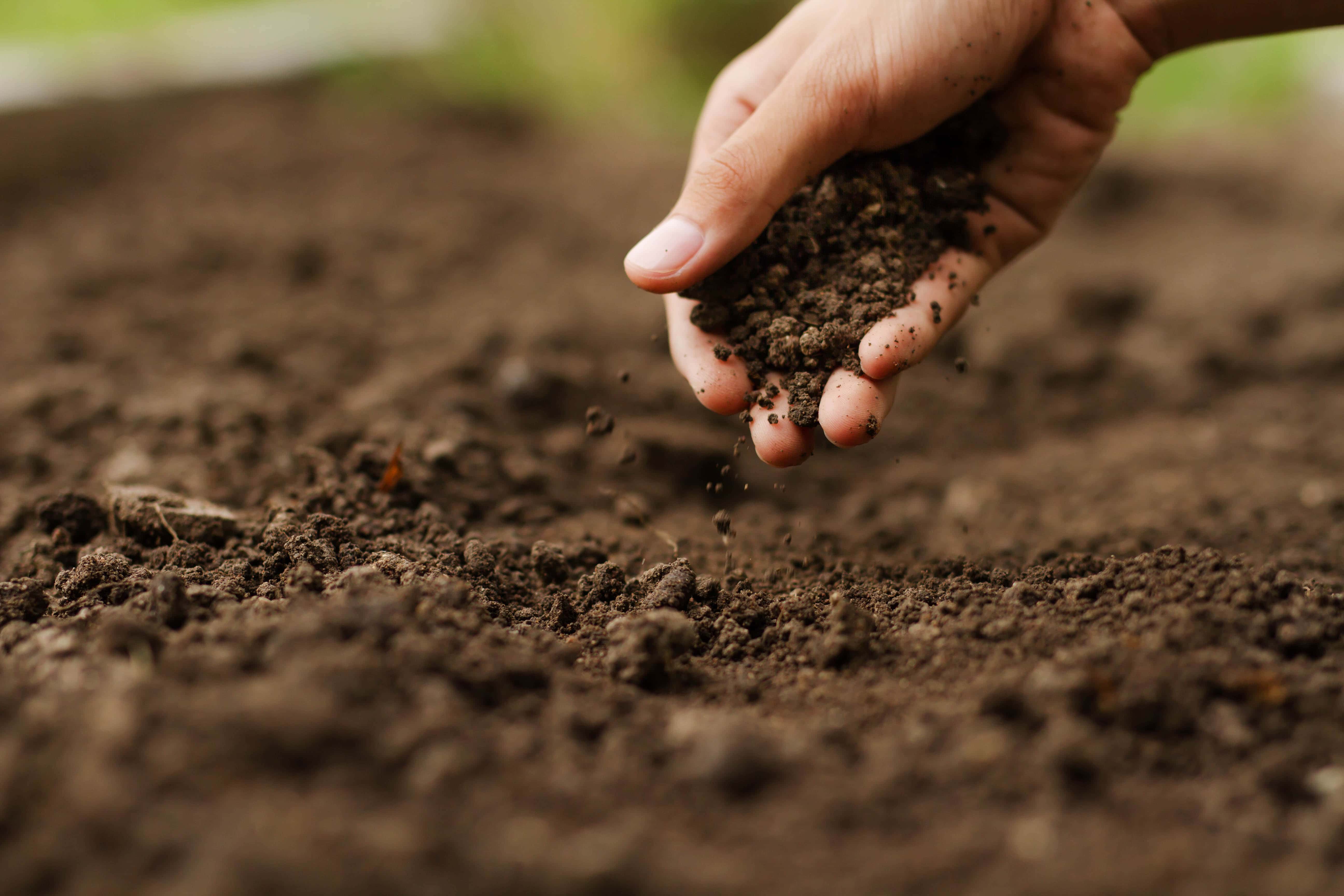
What Is Garden Soil?
Garden soil is basically a blend of compost and organic matter found on the top layer of the soil. Unlike potting soil, garden soil is heavier and denser. If you scoop a handful and squeeze, it will likely clump together.
Garden soil is readily available. You can gather some straight from your garden or purchase some from your local store. Whichever your source, ensure that the soil has the perfect ratio of all the crucial nutrients and elements that a plant needs to thrive.
Usually, garden soil is used for outdoor plants. Good garden soil should have a medium (made from compost) without any added mulch or nutrients. The main purpose of garden soil is to hold plant roots in check because if a plant uses all its energy in root development, it may stall the growth above the ground.
You can also mix garden soil with topsoil to add nutrients that help in the growth and maturation of the plants. However, you may have to add some fertilizer with peat moss and chemical products to increase nutrient content and improve drainage in the soil. Therefore, ensure the garden soil you use fulfills the needs of your plants and promotes growth.
Types of Garden Soil
Garden soil is categorized into different sections depending on the type of dominant soil. The categories include:
- Loam Soil: This type of garden soil contains a perfect balance of silt, clay, and sandy soil. It can either lean toward sand or clay, depending on the dominant composition. Due to the perfect balance, loam soil is ideal for beginner gardeners. It is usually very fertile and easier to work with.
- Clay Soil: This soil type may have a heavy texture, but it’s full of plant nutrients. It tends to remain wet in cold temperatures and solidifies at room temperature. It also has higher water retention because of the tiny spaces between clay soil particles. Unfortunately, it is harder to work with due to its heavy texture and is not ideal for plants that can only thrive in well-draining soils.
- Silt Soil: This soil type is popular among gardeners because of its high moisture retention capacity, fertility, and light texture. It may contain medium-sized particles, but they are well-draining. However, you may have to add mulch to make the soil denser to prevent it from getting washed away by rain.
- Sandy Soil: This soil type tends to be low in nutrient content, light in texture, warm, dry, and slightly acidic. Sandy soil is also easier to work with and it drains better. However, garden soils that have high sandy soil content require nutrient boost by adding composite materials.
- Peat Soil: This type of soil is considered the rarest garden soil by most gardening enthusiasts. Yet, you can order some from your local garden store to improve drainage, moisture retention, and the fertility of your garden. Moreover, peat moss contains high organic matter levels that are beneficial to all plants.
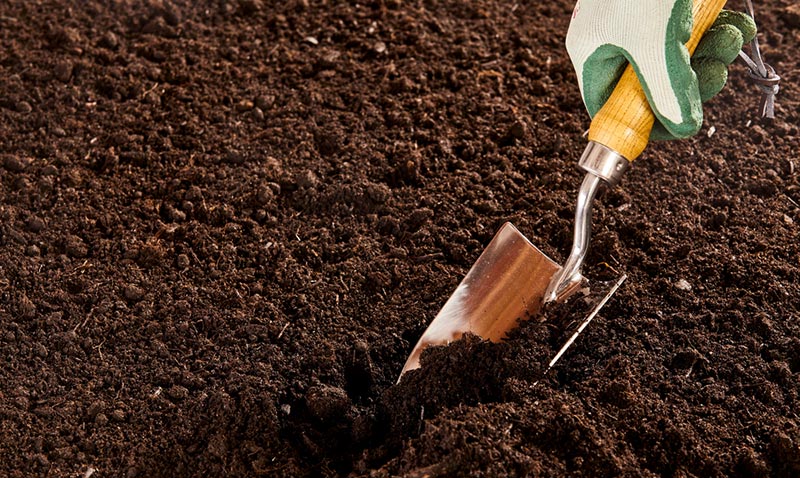
Uses of Garden Soil
Garden soil is most suitable for use in landscape planters or vegetable plots. You can add the growing medium at a base on raised beds to amend the topsoil where the plants grow for better texture and drainage.
If the topsoil is of poor quality, you can add up to 6 inches of garden soil to the topsoil before transplanting to promote growth. Furthermore, you can add fresh garden soil to your vegetable patch every season to keep the soil in tip-top conditions.
Also, if you have low spots or dives in your lawn, you can sprinkle garden soil over the area and rake to promote faster growth of the grass.
Unfortunately, it is not recommended to use garden soil in containers. It lacks the necessary pumice or perlite composition to prevent clumping, thus preventing the plant roots from breathing. If you want to add garden soil to your potting mix, ensure that you add the necessary amendments and nutrients to make the mix loose and lightweight.
- Affordable and readily available
- Robust moisture retention capacity, which is ideal for use in overly dry weather conditions
- Suitable for outdoor plants because it contains a variety of compost-based and natural constituents
- Needs to be supplemented with fertilizer, making garden soil unsuitable for promoting plant growth
- Garden soil is dense and heavy due to its high-water retention capacity
- Only ideal for outdoor plants because it lacks the necessary structure and nutrient concentration required for potted plants
Garden Soil vs Potting Soil: What’s the Difference?
Now that you know the fundamentals of both potting and garden soil, we can now directly compare the two growing mediums. We will look at various factors to help you determine which is best suited for your plants and meets your landscaping needs.
Source
To put it mildly, the source of garden soil is decomposed animal and plant matter. You can dig it up in your yard or purchase it from your local store for outdoor applications. On the other hand, potting mix is made up of various soil-enriching elements and is commercially produced. The potting mix comes in an airtight bag available at a local garden store.
Composition
Your garden soil will vary considerably depending on your locality. Be that as it may, it consists of weathered minerals such as pebbles, rocks, decayed plants, and animal remains. It also contains naturally decomposed living organisms that help add nutrients to the soil.
The potting mix may be manufactured and packaged in the same place, but it comprises a variety of different products. The crucial elements include composed sawdust, peat moss, perlite, and vermiculite. All the minerals contained in potting soil help the plants grow and thrive.
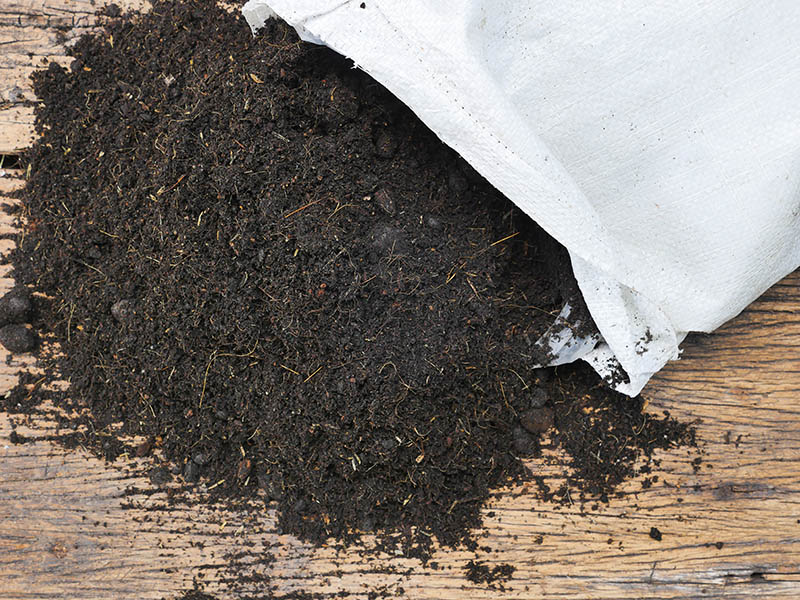
Drainage
For plants to thrive, they need soil with enough air circulation and proper water drainage. Garden soil contains these air spaces that make it ideal for use with outdoor plants. This allows garden soil to drain water and can be watered using regular rubber or metal hose pipes. If the soil is thick and compacted, the roots will not have enough water and air circulation. This can hinder the development of the plant.
Potting soil also has better water and air circulation, but is best suited for indoor plants. You need only water the plants with a watering can for the potted plants to thrive.
Weight
Generally speaking, garden soil has higher organic matter concentration and water retention capacity. Furthermore, since it is denser and heavier, it compacts easily leading to issues such as suffocation and root rot in your plants.
However, the potting mix can retain moisture but has better drainage because it is light and airy.
Nutrients
As mentioned earlier, garden soil is made up of decayed animal and plant matter, which contains a lot of nutrients ideal for outdoor applications. Unfortunately, the nutrients tend to degrade over time, requiring natural replenishing.
Potting soil has limited natural nutrients, but the available nutrients are enough to help your plants grow because they cannot be replenished.
Presence of Microbes
As earlier mentioned, potting mix is manufactured without the presence of microbes. It is composed of processed components such as perlite or pumice. Unfortunately, the processing of the materials kills all available microbes. This is perhaps why it is often referred to as a non-living growing medium.
Potting mix manufacturers intentionally sterilize their products to eliminate any potentially harmful microbes and to kill weeds. Sure, the resulting potting mix may be safe for plant use, but the lack of beneficial microbes can significantly affect a plant’s nutrient uptake.
On the other hand, garden soil is considered a living medium. This is because it provides an environment that is conducive enough for microorganisms such as fungi, nematodes, protozoa, actinomycetes, and bacteria to thrive. Some of these microbes may be beneficial to plants, but some are not.
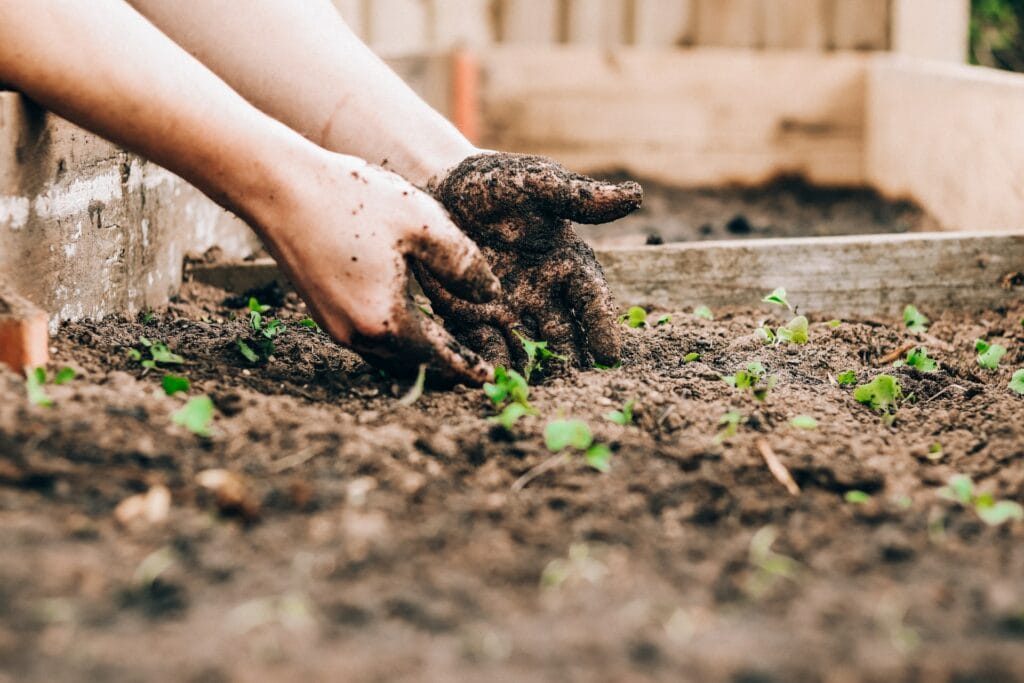
Risk factor to Plants and Humans
Generally, potting soil is harmless to plants and humans. This is because the growing medium is produced under strict processing that helps eliminate most living components.
However, the same doesn’t apply to garden soil because it is made up of an assortment of microorganisms that can potentially be dangerous to humans and plants.
Price
Due to the whole manufacturing, sterilization, and packaging process involved in potting soil production, it is significantly pricier than garden soil. Furthermore, the presence of ingredients such as vermiculite and pumice drives up the cost.
Garden soil on the other hand is cheaper at a gardening store. You can also harvest the garden soil from your yard for free.
Conclusion
Since garden and potting soils have different compositions, their applications are different too. In most instances, garden soil is denser, heavier, and has microbes, making it ideal for outdoor applications. However, potting mix requires additional supplements to boost plant growth and development.
Comparatively, potting soil is lightweight and well-draining, making it suitable for indoor plants. Furthermore, it helps promote growth when growing your plants from seeds. The potting mix might contain limited nutrient supplements, but it still helps your plants to thrive.
Sure, the potting mix may have several benefits for potted plants; however, it may not be worth the price if you intend to use it on outdoor plants and on a large scale. From an economic viewpoint, garden soil can be applied with little to no expenses and is great for considerably large garden spaces.
Either way, both garden and potting soil are excellent growing mediums and should be used correctly for optimum results. Have fun gardening!
See also:
- Does Costco Carry Potting Soil? The Surprising Answer!
- How to Get Rid of Potting Soil Smells in 5 Steps
Featured Image Credit: (L) progressman, Shutterstock | (R) Alexander Fox | PlaNet Fox, Pixabay
Contents


